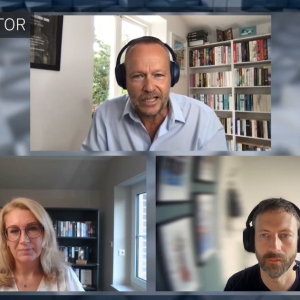Microsoft Corp finally got around to responding to Oracle Corp CEO Larry Ellison’s $1m database challenge yesterday, claiming that it had put together a system with Hewlett-Packard Co that solved the same business problem as the Oracle challenge. Microsoft said it ran the tests on a system costing $600,000, compared with the $10m system used for the Oracle benchmark. However, Microsoft did not post official TPC-D benchmarking figures, and said it did not intend to do so. Oracle Corp withdrew the challenge three weeks ago when it came out with a revised set of benchmarks.
The Oracle challenge pitted the Oracle8i database against Microsoft’s new SQL Server 7.0 database. Specifically, Oracle said it would pay $1m to the first person who demonstrated that SQL Server 7.0 could come within 100 times of Oracle’s best published performance for query number 5 of the current TPC-D specification (a benchmark specifically designed to test database performance). To comply, the challenger would have to run a complete 1-terabyte TPC-D benchmark, including all requirements for loading, updating and querying data and publish a full disclosure report of all performance metrics. Oracle further specified that the benchmark has to be audited by a TPC-certified auditor to ensure compliance with TPC benchmark rules.
Microsoft’s recent test met few of the criteria, although it was independently audited by database analyst Richard Winter. Instead, Microsoft said, it set out to show database performance on real-world business solutions. According to Microsoft lead product manager for SQL Server, Barry Goffe, Oracle’s test used materialized views technology, a way of pre-aggregating a complex query and storing it in the database as if it were an index or a view. That’s fine for database reports, where the query is known in advance, but less useful for ad hoc business queries where users submit more or less random queries against a data warehouse – the problem the TPC-D benchmark was originally set up to measure.
Goffe said that Microsoft would add materialized view capabilities to the next version of SQL Server, but in the mean time would not submit for a TPC-D benchmark until they had been revised to take account of the new technologies. In February, the TPC Council ruled that TPC-D was now one benchmark trying to measure two different business environments. It proposes breaking the benchmark into a separate TPC-R for business reporting, and a TPC-H benchmark for ad hoc queries.
Microsoft therefore ran its tests using SQL Server 7 in conjunction with its OLAP Services, not allowed under TPC rules, to optimize queries across the board. Using a four way HP Net Server LXr 8000 using Xeon CPUs lent to it by Hewlett-Packard, Microsoft built a 1TB database and achieved an average of 1.07 seconds for the same query, compared to Oracle’s seven tenths of a second timing – still 50% slower but well within Oracle’s 100 times limit. Microsoft claimed that Oracle wouldn’t be able to match its price, as it sells its Oracle Express OLAP server separately from the mainstream database engine.
Oracle, which is looking at Microsoft’s claims and promises a more detailed response tomorrow, accused the company of not playing by the established rules.






